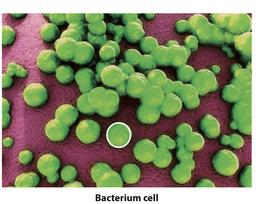Feel free to use or edit a copy
includes Teacher and Student dashboards
Measures 2 skills from
Measures 2 skills from
With a free account, teachers can
- edit the questions
- save a copy for later
- start a class game
- automatically assign follow-up activities based on students’ scores
- assign as homework
- share a link with colleagues
- print as a bubble sheet
25 questions
Show answers
- Q1What is the difference between eukaryotes and prokaryotes?Eukaryotes have a nucleus but prokaryotes do not.Prokaryotes have a nucleus but eukaryotes do not.They are the same.300sMS-LS1-2
- Q2Which of the following is NOT a characteristic of living things?Needs waterMade of one or more cellsNeeds energyMovement300sMS-LS1-1
- Q3Which of the following is NOT a part of cell theory?Cells are the basic units of structure and function in living thingsAll living cells come from existing cells.All living things are made up of one or more cellsAtoms are made of cells.300sMS-LS1-1
- Q4How do protists move?They use a flagella like a tail.The move the cilia.300sMS-LS1-2
- Q5What two organelles work together in a plant cell to make food and change the food into usable energy?Chloroplasts and central vacuoleChloroplasts and nucleusChloroplasts and RibosomesChloroplasts & Mitochondria300sMS-LS1-2
- Q6Which of the following is not able to make its own food?bacterial cellsplant cellsprotist cellsanimal cells300sMS-LS1-2
- Q7How do most fungi get their energy?They make their own food with chemosynthesis.They decompose dead material.They make their own food with photosynthesis.300sMS-LS1-2
- Q8What type of cell uses spores to reproduce?fungianimalplantbacteria300sMS-LS1-2
- Q9How does a plant cell reproduce?buddingshares plasmidsbinary fissioncytokinesis300sMS-LS1-2
- Q10How do bacteria share genetic information with other bacteria?binary fissioncytokinesisbuddingconjugation of plasmids300sMS-LS1-2
- Q11What organelle acts like a gate and controls what goes in and out of the cell?endoplasmic reticulumcell membranecell wallnucleus300sMS-LS1-2
- Q12What organelle provides structure and shape to a cell?cell membranenucleuscell walllysosomes300sMS-LS1-2
- Q13What organelle converts food into usable energy for the cell?mitochondriacell membranelysosomesnucleus300sMS-LS1-2
- Q14Which of the following is NOT a place to find DNA in a cell?vacuoleplasmidsgenetic materialnucleus300sMS-LS1-2
- Q15What organelle makes proteins and part of the cell membrane?nucleusendoplasmic reticulumlysosomesribosomes300sMS-LS1-2
